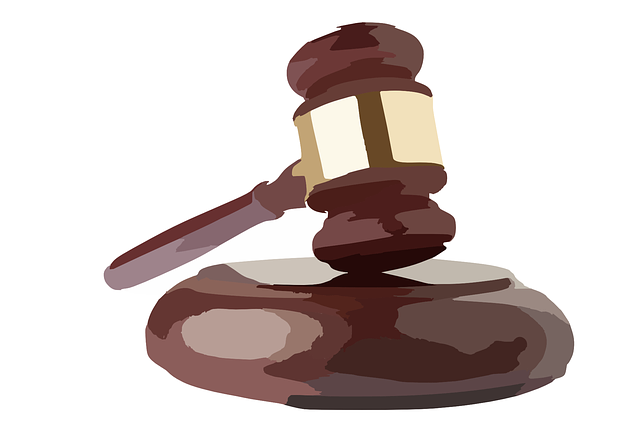Contempt modification requests allow individuals or entities to adjust previous court orders if circumstances change or the original judgment is no longer feasible. This process involves a thorough review of allegations, gathering evidence, and presenting compelling arguments to the court, all while prioritizing compliance with legal judgments. When a party fails to meet contempt order terms, they can petition for modification, demonstrating changed circumstances like financial struggles. Courts assess these requests against the backdrop of compliance with legal judgments, potentially enforcing penalties for willful disregard. Filing a modification petition requires understanding jurisdiction-specific requirements, preparing detailed affidavits, and ensuring proper service, emphasizing compliance with legal judgments. Balancing enforcement with evolving circumstances, both parties must demonstrate compliance or significant changes to justify modifications, leading to fair outcomes through strategic collaboration.
In many legal disputes, contempt modification requests arise when parties seek to adjust or terminate existing orders due to changing circumstances. This article delves into the intricate process of navigating these requests, focusing on the legal framework and strategies for effective modification. We explore the importance of understanding contempt modification, the role of compliance with legal judgments, and practical steps to file a petition. Additionally, we highlight common challenges and share success stories, offering valuable insights into this vital aspect of legal dispute resolution.
- Understanding Contempt Modification Requests
- Legal Framework for Modifying Contempt Orders
- Compliance with Legal Judgments: A Key Aspect
- Steps to File a Modification Petition
- Common Challenges in Contempt Modification Cases
- Success Stories: Effective Modification Strategies
Understanding Contempt Modification Requests

Contempt modification requests are legal processes where individuals or entities seek to alter or amend previous contempt of court orders. These requests often arise when there’s a change in circumstances or when parties believe that the original judgment no longer aligns with their current situation. Understanding these requests is crucial for maintaining compliance with legal judgments, ensuring fairness, and promoting justice.
When navigating a contempt modification request, it’s essential to carefully examine the specific allegations, gather relevant evidence, and present a compelling argument. This process allows courts to reevaluate the terms of the original order, make informed decisions, and potentially modify them to better accommodate the evolving needs and circumstances of all parties involved while upholding the integrity of the legal system.
Legal Framework for Modifying Contempt Orders

Contempt modification requests operate within a specific legal framework designed to ensure compliance with legal judgments. When an individual or entity fails to adhere to the terms set forth in a contempt order, the aggrieved party can petition the court for modification. This process involves careful consideration of the circumstances surrounding the non-compliance, including any changes in the parties’ situations since the original order was issued.
The court evaluates the request by examining whether there has been a significant shift in conditions that could affect the ability or willingness to comply with the judgment. This may include financial difficulties, changed personal circumstances, or new legal developments that make adherence difficult. The goal is to balance the need for enforcement with equity, ensuring fairness to all parties involved while maintaining the integrity of the legal process and judgments.
Compliance with Legal Judgments: A Key Aspect

Compliance with legal judgments is a fundamental aspect of any contempt modification process. When an individual or entity fails to adhere to the terms set forth by a court order, it can lead to severe consequences and potential further legal action. Courts expect all parties involved in a case to respect and follow the established rules and regulations, ensuring fairness and justice for all.
Non-compliance often requires the aggrieved party to file a contempt petition, which can be a complex process. By demonstrating a willful disregard for the court’s authority and the rights of others, the petitioner aims to persuade the court to take action. This may result in penalties, fines, or even imprisonment, emphasizing the importance of adhering to legal judgments to avoid such repercussions.
Steps to File a Modification Petition

To file a modification petition, the first step is to ensure comprehensive understanding and strict adherence to the legal requirements governing contempt modifications in your jurisdiction. This involves reviewing the original court order or judgment to identify specific clauses related to compliance expectations and any provisions permitting modification under certain circumstances. It’s crucial to prepare a detailed affidavit that outlines the reasons for the requested change, backed by relevant evidence demonstrating significant shifts in circumstances since the initial order was made.
The next step is to compile all necessary documents, including the original court order, subsequent communications or agreements with the other party (if any), financial records, and any other proof supporting your case. Filing the modification petition with the appropriate court, along with the required fee, marks the formal initiation of the process. It’s essential to strictly adhere to filing deadlines and ensure proper service of the petition to all relevant parties as mandated by law.
Common Challenges in Contempt Modification Cases

Contempt modification cases present unique challenges, often requiring a delicate balance between upholding legal judgments and considering changed circumstances. One common hurdle is ensuring compliance with legal judgments, which can be complicated by evolving legal landscapes and interpretative nuances. The onus lies on both parties to navigate these complexities, demonstrating either continued non-compliance or substantial changes warranting modification.
Another challenge arises from the inherent adversarial nature of such cases. Maintaining a fair process becomes crucial, especially when determining if the respondent has made genuine efforts towards rectifying the original contempt. Effective communication and transparent documentation are essential to overcome this, allowing for a comprehensive assessment of the situation and facilitating a just outcome.
Success Stories: Effective Modification Strategies

In the realm of contempt modification requests, success stories often emerge from strategic approaches that prioritize both the letter and spirit of the law. Effective strategies involve a meticulous understanding of the underlying legal judgment, demonstrating a willingness to comply with its terms while proposing modifications that are mutually agreeable. For instance, in cases where the original order has become outdated or impractical, parties can collaborate to update it, ensuring continued compliance without undue hardship.
These successful modifications often highlight the importance of open communication and collaborative problem-solving. By engaging in good-faith negotiations, parties can navigate complex legal landscapes, ultimately reaching resolutions that reflect the evolving needs and circumstances while maintaining integrity with the original judgment. This not only facilitates a smoother transition but also strengthens the compliance with legal judgments, fostering an environment where modifications are seen as opportunities for growth rather than loopholes.






